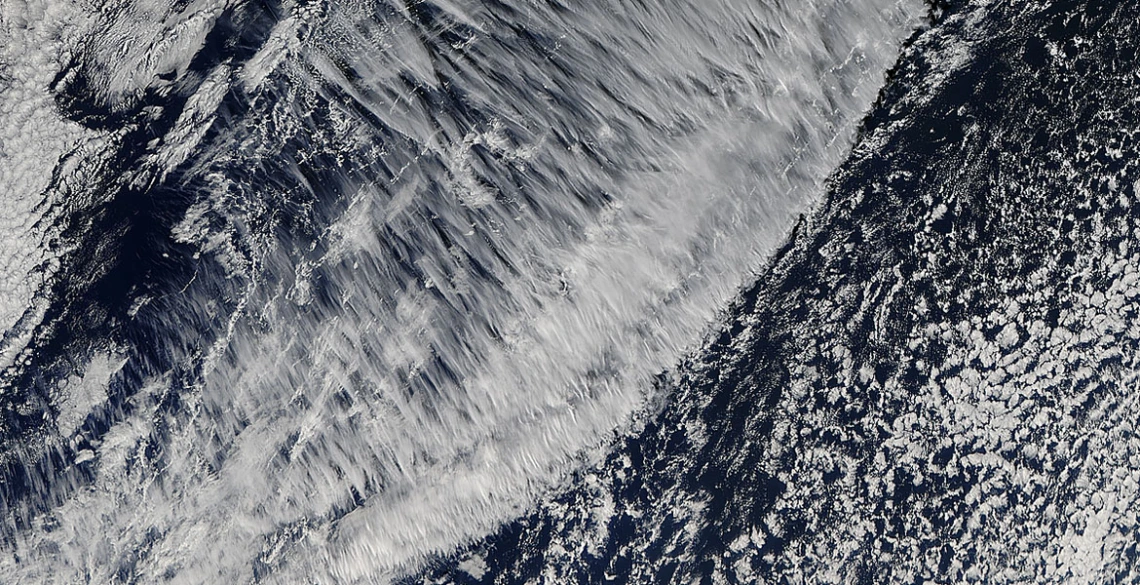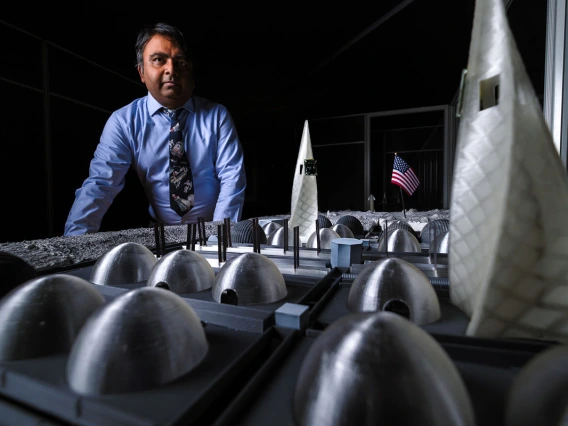$4.5M NASA award advances technology to predict climate change
CHIRP instrument for research on ice cloud properties aims to improve accuracy of global temperature projections.

The CHIRP – Channeled Infrared Polarimeter – is geared to collecting more accurate data from ice clouds (such as these cirrus formations off the coast of Chile) to better predict global climate change. (Image credit: NASA)
Thanks to $4.5 million from NASA, a University of Arizona engineer and optical scientist are developing a compact tool – called CHIRP, or CHanneled Infrared Polarimeter – that delivers better data on ice crystals for climate change modeling.
Ice crystals in cirrus clouds can show how much radiation is absorbed into the Earth's atmosphere, providing better insight into global warming. But these crystals are notoriously difficult to monitor, which is where CHIRP offers an exciting solution.
Principal Investigator Meredith Kupinski, associate professor of optical sciences at the Wyant College of Optical Sciences, and science principal investigator Sylvia Sullivan, assistant professor of chemical and environmental engineering at the College of Engineering, are leading the project as part of NASA’s Earth Science Technology Office Instrument Incubator Program.
The IIP funds the development of technologies for observing Earth science phenomena.
Finding clarity in the clouds
Clouds remain a major source of uncertainty in climate models. Their properties can either provide a cooling effect by reflecting the sun’s rays away from Earth or contribute to warming by absorbing radiation released from the Earth’s surface.
Ice clouds can provide insight into the latter because as the Earth’s surface warms, it emits more radiation into the atmosphere, and this radiation is absorbed within ice clouds. But ice clouds don’t emit more radiation as they warm, creating what researchers call a positive feedback effect in which the clouds are increasing global warming by trapping the Earth’s heat.
A lack of accurate ice cloud observational data in climate models can lead to significant uncertainty in projected warming, circulation, and precipitation shifts for the coming decades.
But ice clouds are difficult to measure for a few reasons.
“They [ice clouds] can be small in scale and short-lived,” Sullivan said.
“Also, they are made up of ice crystals that have a huge variety of sizes, shapes and features that affect how they absorb and scatter radiation,” Sullivan added.
Measuring the intensity of scattered radiation can help determine if ice clouds are furthering global warming and, if so, how much.
Additionally, ice clouds form at altitudes where commercial aircraft fly, making it difficult to measure with available tools like weather balloons.
The team will build CHIRP to tackle these limitations and provide clearer observational data on ice clouds.
CHIRP will get around the difficulty of high-altitude measurements “by using remote sensing to measure the orientation and infer the shape and size of ice crystals,” she said.
Remote sensing capabilities will be useful for its eventual destination: space.
During the three-year project, the CHIRP team will design and test a prototype to prepare the technology for future flight deployment on a CubeSat.
“The compactness of CHIRP will enable deployment of these radiometer-polarimeters on future space-flight missions,” Kupinski said.
Sullivan and Kupinski will work closely with NASA scientists and co-investigators David Ting and Tobias Wenger from the Jet Propulsion Laboratory, as well as assistant professor of electrical and computer engineering Noah Rubin from the University of California San Diego. All parties are supported by dedicated graduate students.
“Efforts like this one, which join modeling and observational capabilities, are key to making progress in our projections of climate change,” Sullivan said.



